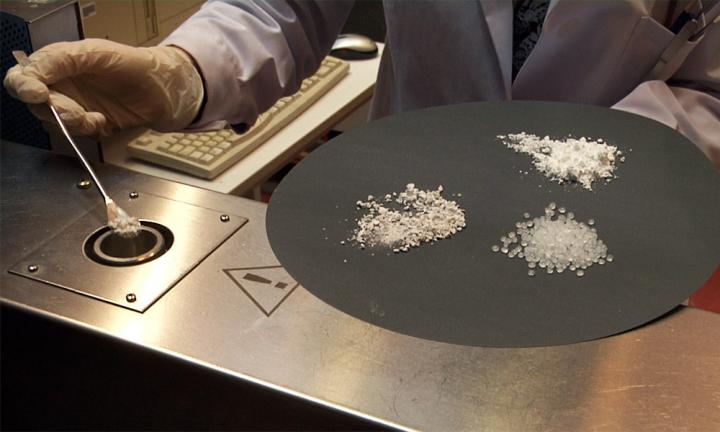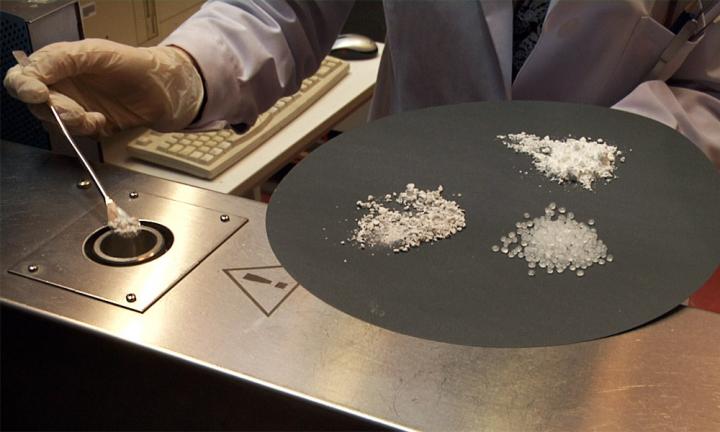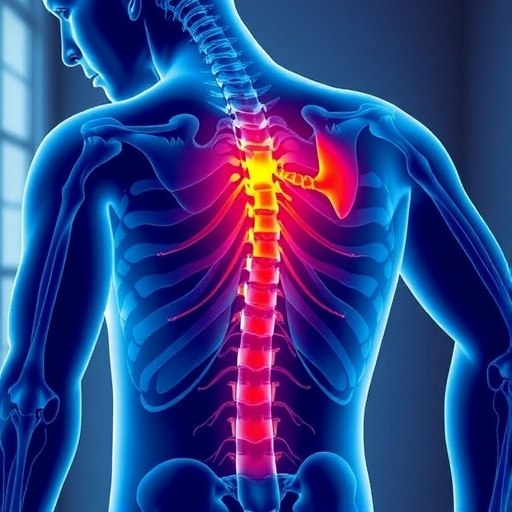
Credit: UC3M
Electric batteries are electrochemical devices that convert chemical energy stored in electricity. They consist of one or several electrochemical cells, and each cell is made up of one positive (cathode) electrode and one negative (anode) electrode, separated by an electrolyte which allows the ions to move between the electrodes. Currently, lithium-ion batteries are the main electrochemical storage systems in electronic devices and the area of transportation. "What we have patented are new ceramic electrodes that are much safer and can work in a wider temperature interval," explained Professor Alejandro Várez, one of the inventors from the UC3M Materials Synthesis and Processing research group.
It is a method of making ceramic sheets by way of a thermoplastic extrusion mold. "This technique allows making electrodes that are flat or tube-shaped, and these electrodes can be applied to any type of lithium-ion battery," said Várez. Moreover, the cost of production is relatively low, and, according to its creators, it is easy to adapt to the current process of production, so the next step to industrialization would be immediate.
These ceramic electrodes consist only of active material, which reduces the risk of degradation and inflammation at high temperatures (greater than 100? C). "This is especially important in the case of electric vehicles, because if there is an accident and fire, conventional batteries can catch fire, and it is very difficult to extinguish," said Jean Yves Sanchez, another inventor of the patent and UC3M CONEX researcher from the Université Grenoble Alpes (France). "These new solid electrodes can't burn, which contributes to improving the safety of the batteries," he added.
When there are major electrical consumption peaks, commercial lithium-ion batteries tend to overheat and, in some cases, even explode. The reason is that the electrolytes normally used contain organic liquid solvents that can ignite, like the additives used for the fabrication of electrodes. "With our technology, however, solvents are not used during the fabrication process," said Sanchez. "In addition, if you compare them with conventional electrodes, the ones we obtain with this fabrication process are very hard and can't be cut, which contributes to improving the solidity of the battery."
Another advantage of batteries that integrate these new electrodes is their efficiency, according to tests done by the researchers. These tests show an increase of specific capacity that is nearly triple the capacity of commercial electrodes with the same density. And as this technique permits the fabrication of high-density electrodes (between 450 and 1000 microns), the storage capacity by area increases up to ten times the capacity of current technology.
###
The inventors of the patent applied for are Alejandro Várez, Belén Levenfield, Jean-Yves Sanchez, Mª Eugenia Sotomayor and Wilmer Bucheli, from the Materials Synthesis and Processing research group, and José Manuel Amarilla, a researcher from the CSIC Madrid Institute of Materials Science. "The participation of the UC3M Science Park has been key because it has supported us in both the processing and commercialization of the patent," said Várez.
Video: https://youtu.be/Z_lxsLbXL88
Contact: [email protected]
Media Contact
Javier Alonso
[email protected]
@uc3m
http://www.uc3m.es
############
Story Source: Materials provided by Scienmag





